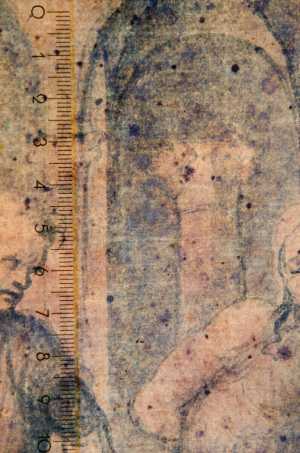Specifications
| Title | The Flagellation of Christ |
|---|---|
| Material and technique | Brush and blue ink, blue wash |
| Object type |
Drawing
> Two-dimensional object
> Art object
|
| Location | This object is in storage |
| Dimensions |
Height 375 mm Width 270 mm |
|---|---|
| Artists |
Attributed to:
Girolamo Romanino
|
| Accession number | I 366 (PK) |
| Credits | Loan Stichting Museum Boijmans Van Beuningen (former Koenigs collection), 1940 |
| Department | Drawings & Prints |
| Acquisition date | 1940 |
| Creation date | in circa 1540 |
| Watermark | Roman she-wolf in rectangle(?), (64 x 23 mm (?), difficult to see, centre on P6 of 12P, vH) |
| Collector | Collector / Franz Koenigs |
| Mark | F.W. Koenigs (L.1023a) on removed fragment of backing sheet |
| Provenance | Franz W. Koenigs (1881-1941, L.1023a), Haarlem, acquired in 1920-1930 (North Italian, c. 1500); D.G. van Beuningen (1877-1955), Rotterdam, acquired with the Koenigs Collection in 1940 and donated to Stichting Museum Boijmans Van Beuningen |
| Research |
Show research Italian Drawings 1400-1600 |
| Material | |
| Object | |
| Geographical origin | Italy > Southern Europe > Europe |
Do you have corrections or additional information about this work? Please, send us a message
























